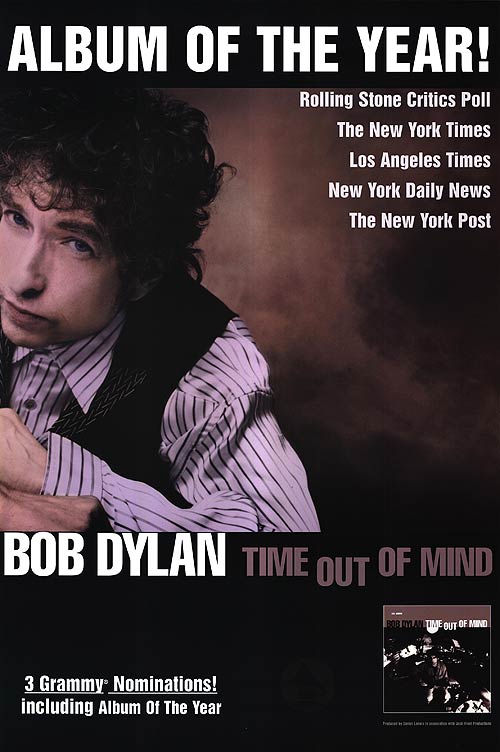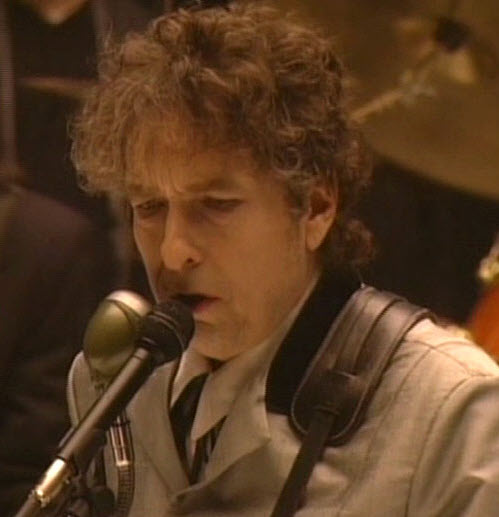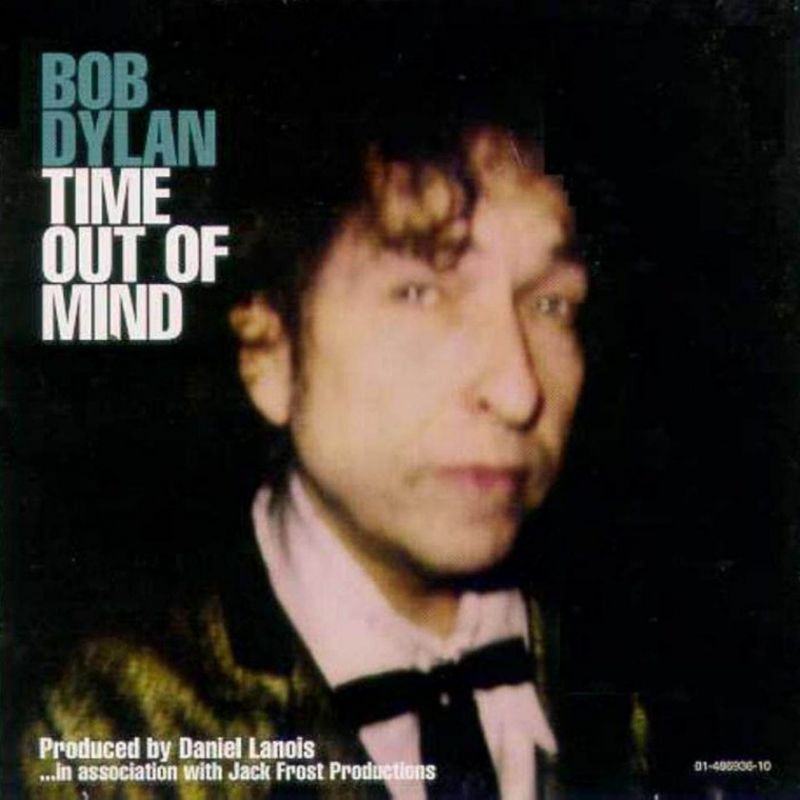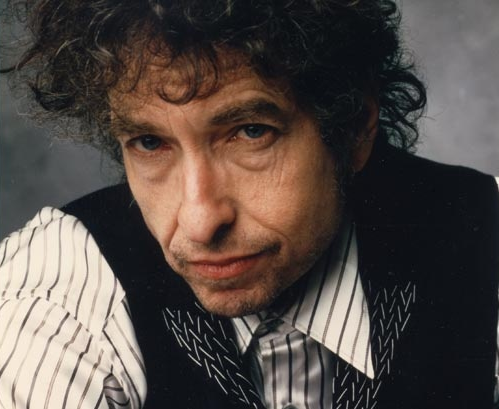Redirecting to a newer version of this post….
Cold Irons Bound (official video):
From Wikipedia:
| Released | September 30, 1997 |
|---|---|
| Recorded | 1996–1997 at Criteria Recording Studios, Miami, Florida |
| Genre | Blues rock, folk rock, americana |
| Length | 72:50 |
| Label | Columbia |
| Producer | Daniel Lanois (in association with Jack Frost productions) |
Time Out of Mind is the thirtieth studio album by the American singer-songwriter Bob Dylan, released in September 1997 by Columbia Records. It was his first double studio album (on vinyl) since Self Portrait in 1970. It was also released as a single CD.
For fans and critics, the album marked Dylan’s artistic comeback after he struggled with his musical identity throughout the 1980s; he hadn’t released any original material for seven years, since Under the Red Sky in 1990. Time Out of Mind is hailed as one of Dylan’s best albums, and it went on to win three Grammy Awards, including Album of the Year in 1998. Also, the album is ranked number 408 on Rolling Stone’s list of The 500 Greatest Albums of All Time in 2003.
The album features a particularly atmospheric sound, the work of producer (and past Dylan collaborator) Daniel Lanois, whose innovative work with carefully placed microphones and strategic mixing was detailed by Dylan in the first volume of his memoirs, Chronicles: Volume One. Although Dylan has spoken positively of Lanois’ production style (especially for his 1989 album Oh Mercy), he expressed dissatisfaction with the sound of Time Out of Mind. Dylan has self-produced his subsequent albums.
Not Dark Yet (official video):
Background:
In April 1991, Dylan told interviewer Paul Zollo that “there was a time when the songs would come three or four at the same time, but those days are long gone…Once in a while, the odd song will come to me like a bulldog at the garden gate and demand to be written. But most of them are rejected out of my mind right away. You get caught up in wondering if anyone really needs to hear it. Maybe a person gets to the point where they have written enough songs. Let someone else write them.”
Dylan’s last album of original material had been 1990’s Under the Red Sky, a critical and commercial disappointment. Since then, he released two albums Good As I Been To You and World Gone Wrong of folk covers and MTV Unplugged, a live album of older compositions; there had been no signs of any fresh compositions until 1996.
Dylan began to write a fresh string of songs during the winter of 1996 at his farm in Minnesota, which would later make up Time Out of Mind. Criteria Studio in Miami, Florida was booked for recording.
Recording Sessions:
.. Dylan continued rewriting lyrics until January 1997, when the official album sessions began. It would mark the second collaboration between Dylan and Lanois, who had previously produced Dylan’s 1989 release Oh Mercy.
By now, new personnel hired for the album included slide guitarist Cindy Cashdollar and drummer Brian Blade, both hired by Lanois. Dylan brought in Jim Keltner, who was Dylan’s tour drummer from 1979–1981. Dylan also hired Nashville guitarist Bob Britt, Duke Robillard, Tex-Mex organist Augie Meyers, and Memphis pianist Jim Dickinson to play at the sessions.
With two different sets of players competing in performance and two producers with conflicting views on how to approach each song, the sessions were far from disciplined.
With Time Out of Mind, Lanois “produced perhaps the most artificial-sounding album in [Dylan]’s canon,” says author Clinton Heylin, who described the album as sounding “like a Lanois CV.”
Dylan also talked about his difficulty at the recording sessions in an interview with Guitar World magazine. “I lose my inspiration in the studio real easy, and it’s very difficult for me to think that I’m going to eclipse anything I’ve ever done before. I get bored easily, and my mission, which starts out wide, becomes very dim after a few failed takes and this and that.”
Songs
1. “Love Sick” 5:21
2. “Dirt Road Blues” 3:36
3. “Standing in the Doorway” 7:43
4. “Million Miles” 5:52
5. “Tryin’ to Get to Heaven” 5:21
6. “‘Til I Fell in Love with You” 5:17
7. “Not Dark Yet” 6:29
8. “Cold Irons Bound” 7:15
9. “Make You Feel My Love” 3:32
10. “Can’t Wait” 5:47
11. “Highlands” 16:31
Love Sick
The first track on this album is “Love Sick”, which was later also released as a single. Daniel Lanois later said about the recording process of this song,
“We treated the voice almost like a harmonica when you over-drive it through a small guitar amplifier.”
Love Sick @ Grammy Awards – 1998:
Outtakes:
Fifteen different songs were recorded for Time Out of Mind, of which eleven would make the final cut.
The first song that did not was “Mississippi“, which was re-recorded for “Love and Theft”. According to Dylan:
“If you had heard the original recording of [‘Mississippi’], you’d see in a second” why it was omitted and recut for Love and Theft. “The song was pretty much laid out intact melodically, lyrically and structurally, but Lanois didn’t see it. Thought it was pedestrian. Took it down the Afro-polyrhythm route—multirhythm drumming, that sort of thing. Polyrhythm has its place, but it doesn’t work for knife-like lyrics trying to convey majesty and heroism.”
The second song, “Dreamin’ of You”‘, since released on Tell Tale Signs, was unveiled for the first time. “Dreamin’ of you”, released first as a free download on Dylan’s website, had lyrics there were largely adapted into “Standing in the Doorway”, though the melody and music are completely different. The music video which starred Harry Dean Stanton premiered on Amazon.com.
Two more songs, “Red River Shore” (which according to Jim Dickinson “the best song there was from the session”), and “Marching to the City” (which evolved into “‘Til I Fell in Love with You”), were left off the final cut. They were both included on Tell Tale Signs.
Critical reception:
3 important voices…
Michael Gray (from Bob Dylan Encyclopedia):
The album marked a return to the multi-layered production techniques of DANIEL LANOIS, giving it a cohesive sound (disrupted only by the mediocre rockabilly of ‘Dirt Road Blues’) which complemented Dylan’s dour elegy, epitomised by ‘Not Dark Yet’. What made all this compelling was not its sententious claims to shrivelled pessimism but its very human confessional quality and its intimate flashes of humour. The album was also experimental in its then-unprecedented use of lines from other songs, a usage much extended on ‘‘Love and Theft’’, the studio album that followed. Time Out of Mind brings out more variation in response than almost any other Dylan album. For many, many people, it is one of his great works, and held, for instance, to be far superior to ‘‘Love and Theft’’. For others, anyone who really appreciates Dylan must see that the true assessment is the other way around. What achieves more general agreement is that Time Out of Mind offers no less than four major songs: ‘Standing in the Doorway’, ‘Tryin’ to Get to Heaven’, ‘Not Dark Yet’ and the magnificent ‘Highlands’, an audacious 161/2 minutes long and the inspired creative high on which the album ends: a song that is an inventive mix of splendidly
Clinton Heylin (from “Still On The Road”):
… When the results were released the following September, the evidence suggested he had fallen short of delivering that ‘truly exceptional collection of new songs’. Time Out Of Mind merely hinted at such a collection. But then, as one key musical collaborator on the album (Duke Robillard) observed at the time of its release, ‘ I’m told that Dylan always leaves his best songs off the album.’ Already there were whispers he had done the same here. Two songs in particular – ‘Mississippi’ and ‘The Girl From The Red River Shore’ – eulogised by the session musicians, were cut at the last minute to fit an overlong and over-padded record onto a single CD. It would take another eleven years – with the release of Tell Tale Signs – before Dylan okayed the release of fulsome evidence that he had that ‘truly exceptional collection of new songs’ all along….
Paul Williams (Performing Artist3):
… What a great goddamned record. Consciously and openly dipping at the same well as Hank Williams and Robert Johnson and Elvis Presley and Howlin’ Wolf. And tipping a hat to the Rolling Stones (at least once in the lyrics and probably more than once in the music, as if to acknowledge that the rock process and the folk process are the same in this poetic era). Good story, good images, great music and great words.My God. Frankly I think even his fans (some of’em) underrate this man’s artistry. He Works hard. And he sure has fun when he finds a way to let loose and invent and bear down and rant and rave. And Groove. And laugh at life. And tell it like it is.
Personnel:
- Bob Dylan – guitar, harmonica, piano, vocals, production
- Additional musicians
- Bucky Baxter – acoustic guitar, pedal steel on “Standing in the Doorway”, “Tryin’ to Get to Heaven”, “Not Dark Yet”, and “Cold Irons Bound”
- Brian Blade – drums on “Love Sick”, “Standing in the Doorway”, “Million Miles”, “‘Til I Fell in Love with You”, “Not Dark Yet”, and “Can’t Wait”
- Robert Britt – Martin acoustic, Fender Stratocaster on “Standing in the Doorway”, “‘Til I Fell in Love with You”, “Not Dark Yet”, and “Cold Irons Bound”
- Cindy Cashdollar – slide guitar on “Standing in the Doorway”, “Tryin’ to Get to Heaven”, and “Not Dark Yet”
- Jim Dickinson – keyboards, Wurlitzer electric piano, pump organ on “Love Sick”, “Dirt Road Blues”, “Million Miles”, “Tryin’ to Get to Heaven”, “Til I Fell in Love with You”, “Not Dark Yet”, “Can’t Wait”, and “Highlands”
- Tony Garnier – bass guitar, upright bass
- Jim Keltner – drums on “Love Sick”, “Standing in the Doorway”, “Million Miles”, “Tryin’ to Get to Heaven”, “‘Til I Fell in Love with You”, “Not Dark Yet”, and “Can’t Wait”
- David Kemper – drums on “Cold Irons Bound”
- Daniel Lanois – guitar, mando-guitar, Firebird, Martin 0018, Gretsch gold top, rhythm guitar, lead guitar, production, photography
- Tony Mangurian – percussion on “Standing in the Doorway”, “Million Miles”, “Can’t Wait”, and “Highlands”
- Augie Meyers – Vox organ combo, Hammond B3 organ, accordion
- Duke Robillard – guitar, electric l5 Gibson (“Million Miles”, “Tryin’ to Get to Heaven”, and “Can’t Wait”
- Winston Watson – drums on “Dirt Road Blues”
- Technical personnel
- Chris Carrol – assistant engineering
- Joe Gastwirt – mastering engineering
- Mark Howard – engineering
- Geoff Gans – art direction
- Susie Q. – photography
- Mark Seliger – photography
Album @ spotify:
-Egil

![Bob_Dylan_-_Time_Out_Of_Mind-[back]](https://alldylan.com/wp-content/uploads/2012/09/Bob_Dylan_-_Time_Out_Of_Mind-back.jpg)





if something is evident, then it is that nobody needs important voices of so called critical receptionists or people giving schoolgrades to art.
D- (haha)
“Red River Shore” is a rotten song. I’m so glad it wasn’t included in an otherwise wonderful record. I simply don’t understand the love for that monotonous, boring, dull song.
Red River Shore has more poetic invention in it than most of the album, which has its focus on simple, emotive lines, except the outstanding Highlands, and its melody to me is mesmerizing, but I do believe that because of its poetical atmosphere it would not have fitted very well on Time, though I would have prefered it was presented there. Now it’s in the entertaining mismash of Tell Tale, which in itself is an interesting journey, but not an album and is tainted by some subpar recordings and annoying repetitions. The Bootleg Series tends to throw together too much, instead of offering an album with highlights, understandable commercialy spoken, yet artistically not so satisfying for me. Mississippi is a key work for the brilliant Love and Theft, there it should have stood shoulder to shoulder with Things Have Changed, but who am I to suggest, Dylan is the maker… ( I doubt if he has a lot interest in the Bootleg Series).
An amazing album… one of my favorites… but Highlands could have been truncated to make room for The Girl From The Red River Shore… Highlands is kind of boring to me, or maybe too drool for its own good
I actually truncated that song when I had a cassette recorder on my stereo … faded out at the beginning of the conversation with the waitress in Boston.
I’m always amused by all the negative comments and belly aching about the chaotic and contentious sessions and the moaning about the production of TOOM. In reality, what is the relevancy? All that matters is the end result. And when you put the album’s release in context, Dylan had essentially creatively dried up and the idea that he was going to deliver another masterpiece at that point was completely unfathomable. Who in their right mind really believed that in 1997 Dylan was going to make the album of the year? No matter what you think of Lanois’ production, TOOM is a real production and sounds of a piece — and that is an anomaly in the Dylan cannon – even among his acknowledged early masterpieces. And that Lanois production is totally appropriate for the themes of the record.
Thanks for interesting views on this very good album, I agree about the production, just amazing
Egil: Regarding your song-by-song rating of the album: does the number ’11’ next to your overall average of 8.05 indicate that TOOM ranks eleventh overall among Dylan albums using this measure? (or is it simply the number of tracks?)
My song-by-song assessment, by the way: (Average: 8.1)
Lovesick 8
Dirt Road Blues 6.5
Standing in the Doorway 9
Million Miles 7
Trying to Get to Heaven 9
Til I Fell in Love with You 8
Not Dark Yet 10
Cold Irons Bound 8
Make You Feel My Love 6
Can’t Wait 8.5
Highlands 9
Thanks for the comment Steven.
11 tracks – average rating 8.05.
And I can see that the ratings are outdated… “Highlands” is definitely 9!
nothing bob does is bad to me…….i just love him and love the pic……..
This album is a masterpiece. One of the greatest albums I have ever heard. It’s not overrated at all. When it first came out, I wasn’t sure how it would be. But once I listened to it all the way through once, I knew right away that it was practically perfect. I haven’t listened to an album this much since. I will always dig this album out and I always go back to it.
That promo photo above shows just how much they airbrushed him into infinity and beyond elsewhere. Look at the back of the album! He looks plastic.
This photo above though, it’s Dylan au naturel, wrinkled and weathered , and he seems all the more human for it.
abysmal. i wish he had never released it.
Spicy…
I really wished he included Red River Shore instead of Make You Feel My Love. Otherwise, still a very good, if overrated, album.
Make you feel my love. The song of his heart …could never be replaced .